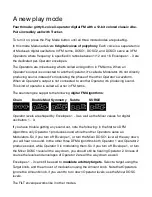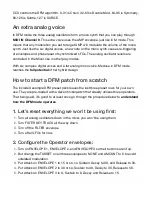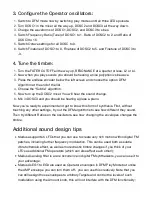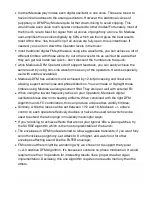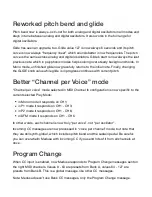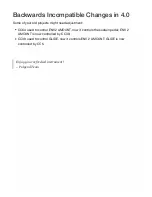
In other Medusa play modes each digital oscillator is one voice. Those are tuned to
have similar loudness to the analog oscillators. However, the additional voices of
polyphony in DFM Play Mode require further down-mixing to avoid clipping. This
would make each voice much quieter compared to other modes! Fortunately, most of
the time it’s rare to blast full signal from all voices of polyphony at once. So Medusa
over-amplifies those voices digitally by 50% which we found gives the best results
most of the time. Yes, this will clip if all voices are fully open, this is intentional. If
needed, you can turn down the Operator levels in the mixer;
most traditional digital FM synthesis is using sine waveforms, you can achieve a lot of
di
ff
erent timbres with those alone, try out other waveforms as well but be aware that
they can get real harsh real quick – don’t discount the humble sine too quick;
while Medusa’s DFM Operators don’t support feedback, you can easily achieve the
same result by using non-sine waveforms as any of the operators. It works especially
well with subtle wavetables;
Medusa’s DFM has a distinct color achieved by 12-bit processing and linear anti-
aliasing, expect some noise and phase distortion. You can mask or highlight those
timbres using Medusa’s analog resonant filter. They also pair well with external FX;
When using the lowest frequency ratios on your Operators, Medusa’s digital
oscillators break down into beating artifacts. When combined with the right DFM
Algorithm and LFO combination, this can produce unique other-worldly timbres;
Similarly, while the ratios can be set between 1/12 and 16, Medusa’s +/- octave
control on each operator e
ff
ectively doubles or halves the used ratio which can be
used to extend the ratio range in musically meaningful ways;
If you’re looking to achieve e
ff
ects that are not your typical ‘80s e-piano patches, try
the SURGE algorithm which is the most unpredictable of the bunch;
The envelopes in DFM mode are tuned to allow aggressive transients; if you want fully
smooth clickless polyphony, set Attack to 8 or higher, and watch out for other
envelopes a
ff
ecting sound like the FILTER envelope;
FM nerds out there might be wondering why we chose not to support the typical
1+2+3 additive DFM Algorithm. It’s because it contains no phase modulation. It would
require more than 3 operators for interesting results like a proper drawbar organ
implementation. Decisively, this one algorithm requires more audio memory than the
others.


